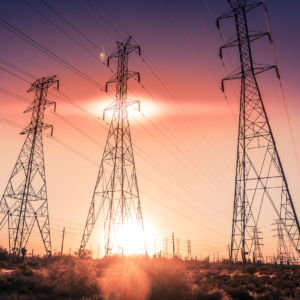The U.S. electric power grid remains catastrophically vulnerable to foreign attacks and natural disaster. This vital and aging infrastructure is particularly susceptible to prolonged blackouts from high impact threats — primarily that of electromagnetic pulse (EMP), which is capable of disrupting, disabling and irreparably destroying electronics over a wide geographic area.
As the only state with a self-contained grid, Texas has the opportunity to proactively guard itself and the country’s most vital defense assets from disaster.
The potential for a long-term power failure is not something of science fiction, as critics suggest. According to weather experts, the sun’s capability to create naturally formed electromagnetic pulses can generate ruinous geomagnetic storms and intense solar flares. Canada experienced such an event in 1989, causing a daylong blackout across half the country. A similar strike in 1921 damaged electronic railroad switches throughout North America.
The most powerful solar storm on record occurred in 1859. The Carrington Event, as it is known, impaired telegraph systems worldwide and destroyed the intercontinental telegraph cable at the bottom of the Atlantic Ocean.
A weather-related incident of that magnitude today would cause incalculable harm to our multilayered, interconnected web of energy and electricity. In fact, NASA found that the Earth narrowly escaped another Carrington Event on July 23, 2012.
More frightening, electromagnetic pulse can be weaponized. Former CIA Director James Woolsey explains that the most destructive of the electromagnetic pulse options remains the high-altitude detonation of a nuclear weapon. Such an operation could theoretically be accomplished by launching a single, unsophisticated ballistic missile from a freighter floating off the American coast. Other delivery systems could include low-orbit satellites and crude nuclear devices.
In any case, an atmospheric detonation would emit a high-frequency shockwave that would cause irreparable injury to electrical equipment big and small. Transportation, emergency services and other life-sustaining infrastructure would come to a standstill. The congressionally mandated EMP Commission concluded in its 2008 report that an electromagnetic pulse attack would so injure important power equipment that a yearlong blackout would ensue, leading to the possible deaths of 270 million Americans from starvation, disease and anarchy.
America’s adversaries recognize the advantage of electromagnetic pulse and actively promote it as a 21st-century means of attack. In 2010, the Defense Intelligence Agency released a translated copy of Iran’s “Passive Defense” military doctrine, which made mention of using electromagnetic pulses 22 times.
Meanwhile, the EMP Commission found that Russia and China have considered limited nuclear-attack options that “employ EMP as the primary or sole means of attack.” North Korea actually practiced an EMP strike scenario in early 2013, according to Peter Pry, executive director of the congressional advisory Task Force on National and Homeland Security.
Texas finds itself in a remarkable position to protect the nation by protecting itself. Most know that the Lone Star State has the second-largest economy and the second-largest population of any state in the country. Few know that it also has the second highest concentration of military installations outside the Northern Virginia/D.C. metro area, and hosts just over 11 percent of the active duty military population currently stationed in the continental United States. Add in civilians, reservists and National Guard members, and the total defense-related population in the state exceeds a quarter of a million people.
From rapid mobilization to next-generation weapons, the country’s national security depends on a functioning Texas grid. And the increasingly unstable geopolitical environment combined with a near-complete societal reliance on electronic technology demands action. There are readily available and cost-effective shielding technologies designed to safeguard electric grid components from an EMP, and detailed steps on implementation. The solutions are at our fingertips. State leadership and the utilities industry just need to make securing the grid a top priority.
Remember: As Texas goes, so goes the nation.

